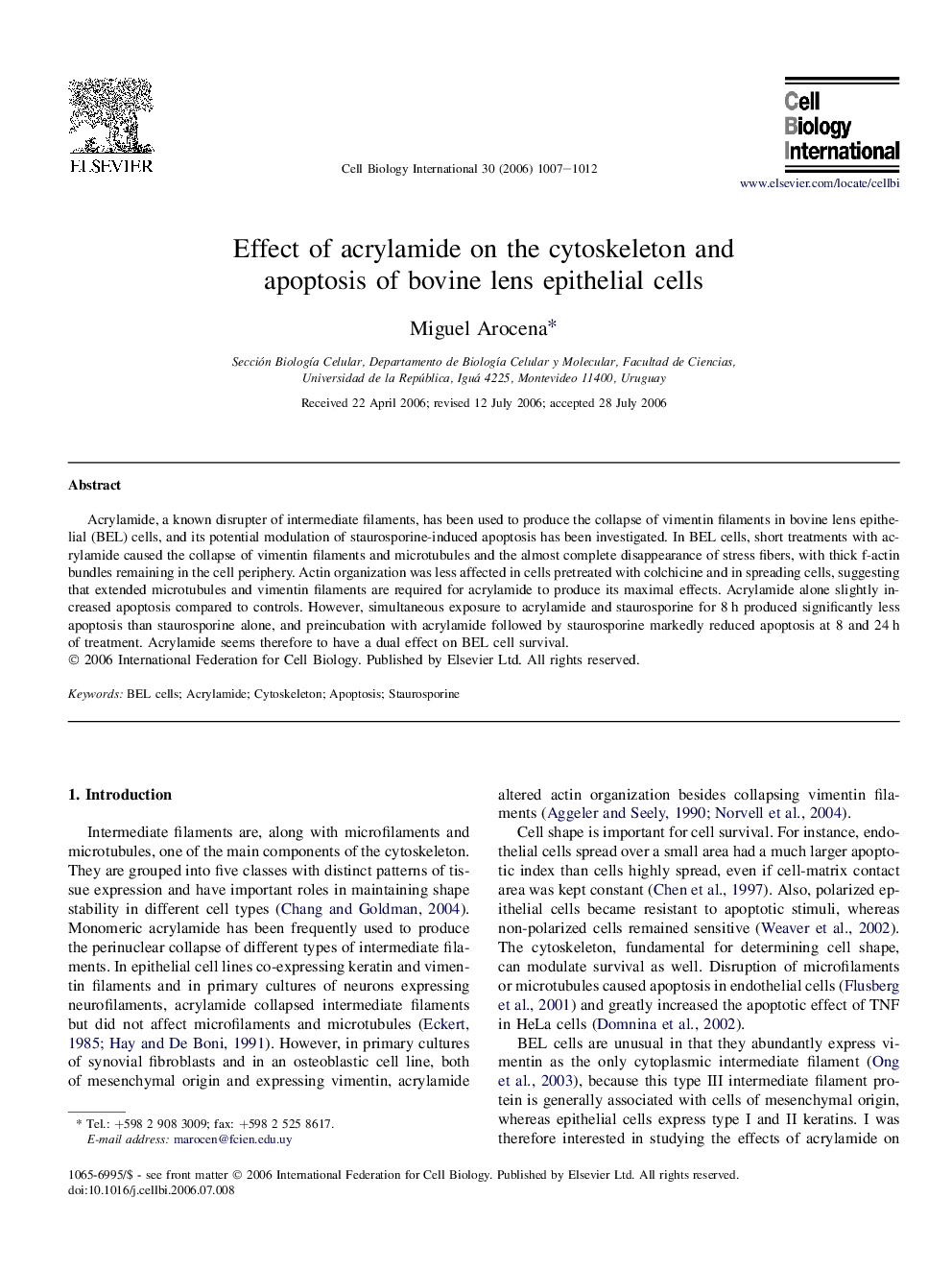| Article ID | Journal | Published Year | Pages | File Type |
|---|---|---|---|---|
| 2067657 | Cell Biology International | 2006 | 6 Pages |
Abstract
Acrylamide, a known disrupter of intermediate filaments, has been used to produce the collapse of vimentin filaments in bovine lens epithelial (BEL) cells, and its potential modulation of staurosporine-induced apoptosis has been investigated. In BEL cells, short treatments with acrylamide caused the collapse of vimentin filaments and microtubules and the almost complete disappearance of stress fibers, with thick f-actin bundles remaining in the cell periphery. Actin organization was less affected in cells pretreated with colchicine and in spreading cells, suggesting that extended microtubules and vimentin filaments are required for acrylamide to produce its maximal effects. Acrylamide alone slightly increased apoptosis compared to controls. However, simultaneous exposure to acrylamide and staurosporine for 8Â h produced significantly less apoptosis than staurosporine alone, and preincubation with acrylamide followed by staurosporine markedly reduced apoptosis at 8 and 24Â h of treatment. Acrylamide seems therefore to have a dual effect on BEL cell survival.
Related Topics
Life Sciences
Biochemistry, Genetics and Molecular Biology
Biophysics
Authors
Miguel Arocena,
